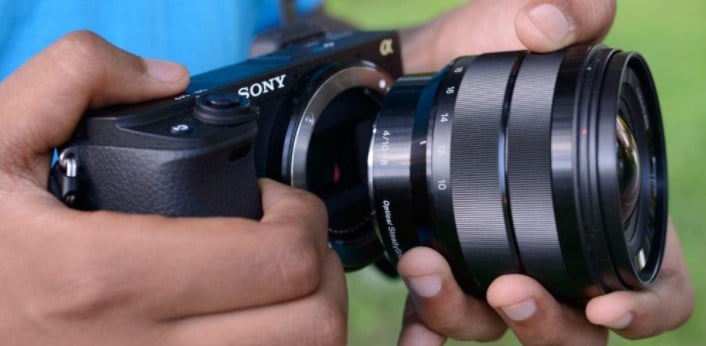Sony E Mount lenses are amazing products that take incredible shots. Also known as mirrorless interchangeable lens cameras, they consist of different features, perform different functions, and work with different products.
However, these products are sometimes used interchangeably or confuse prospective users. If you are a newbie or even a professional photographer, you may need some enlightenment on what these products are to set you on the right track.
Understanding their differences and similarities enables you to make the right decision. In this article, you will learn about the various lenses, their features, functions, and other details the products entail.
What is the Sony E Mount?
The Sony E Mount is also known as a mirrorless interchangeable lens camera (MILCs). It works with different types of lenses including the E and the FE lenses. As a camera, it consists of two main sensors. One of them includes the APS-C sensor which is 23.5×16 mm.

The other type is the Full Frame sensor which is 35.6×23.8 mm. While the APS-C sensor usually makes use of the E lenses to produce optimal results, the full-frame sensor makes use of the FE lenses instead.
What is an APS-C Sensor?
APS means Advanced Photo System. Introduced in 1996, it is divided into three formats – H (High Definition), C (Classics), and P (Panorama).
The APS-C sensor format has an aspect of a 3:2 ratio and is usually found in digital SLR, mirrorless, and compact system cameras. This sensor is smaller in size when compared to the full-frame type. Due to this, it is effective for capturing smaller scenes.
What is a Full Frame sensor?
The full-frame sensor refers to a sensor that maintains the same size as a single negative or frame. It is 24mm high and 36mm wide. With an aspect ratio of 3:2, it has distinct advantages when compared to its counterparts. It has a very shallow depth of field, relievers quality images, and has a higher resolution.
What is an E lens?
E lenses are specifically designed for the APS-C sensors. They are inexpensive and do not come with features such as full-weather sealing.
As a beginner, you can make use of this product to improve your skills. Some of the cameras in which it was designed to include the Sony a6400, Sony a6600, and Sony a6100.
What is an FE lens?
The FE lenses are lenses designed for full-frame sensors. They are usually expensive and come with benefitting features such as full-weather sealing.
With this feature, you can effectively use your lens in an environment with harsh weather conditions and still come out thriving. Whether you are in a scorching desert or freezing snow, your lens is still very much alive.
However, you avoid letting it slip from your hands as it can cause expensive damages. Examples of cameras designed for these lenses include the Sony A7, Sony A7 RIV, Sony A7S II, and more.
Can I use an FE lens on an APS-C sensor?
Yes. An FE lens works on an APS-C sensor. However, you have to consider the crop factor due to the structure of the sensor. While using the FE lens on the sensor, you have to understand that a crop will be applied to the lens. The typical crop factor is 1.5x.
Therefore, if an FE lens of 20mm is applied to the sensor, the equivalent focal length of the lens will be 30mm. Consequently, a 50mm FE lens will have a focal length of 75mm when applied to the sensor. This is a great choice for taking portraits. The same goes for other FE lenses that are applied to an APS-C sensor.
Can I use an E lens on a full-frame sensor?
Yes. An E lens also works well on a full-frame sensor. However, you may not utilize the full potential of the products optimally. One of the reasons is because the full-frame has to be set to a crop mode.
Therefore, only some part of the sensor is utilized. As stated earlier, the crop factor remains 1.5x. Therefore, an E lens of 20mm will resemble a lens of 30mm. The same applies to all lenses of varying sizes.
Which Is Better – The E Mount Or The FE Mount?
Both lenses perform different functions. Besides, they work brilliantly on the manufacturer and produce great results.

However, it is better to opt for the FE mount camera in terms of the materials used and its build quality. The better the build, the longer the product will last.
For professional photographers, you can opt for the FE mount camera as it allows you to perform varieties and functions and also survive harsh weather conditions.
This is not to say that the E mount camera is of bad quality. Instead, the FE mount is more superior, resistant to moisture, and performs better.
Price Factor
Price is a factor when making decisions. Whether you decide to choose a camera with an E mount camera or FE might camera, you ought to consider the price as they vary.
The E-mount APS-C lens is inexpensive compared to the full-frame one with more sophisticated features.
Conclusion
Sony mount cameras are amazing products. Depending on your preferences and needs, you may have to select your choice.
Remember that there is no better camera. You just need to find the one that can suit your needs and improve your skills.
